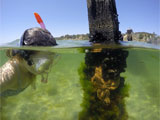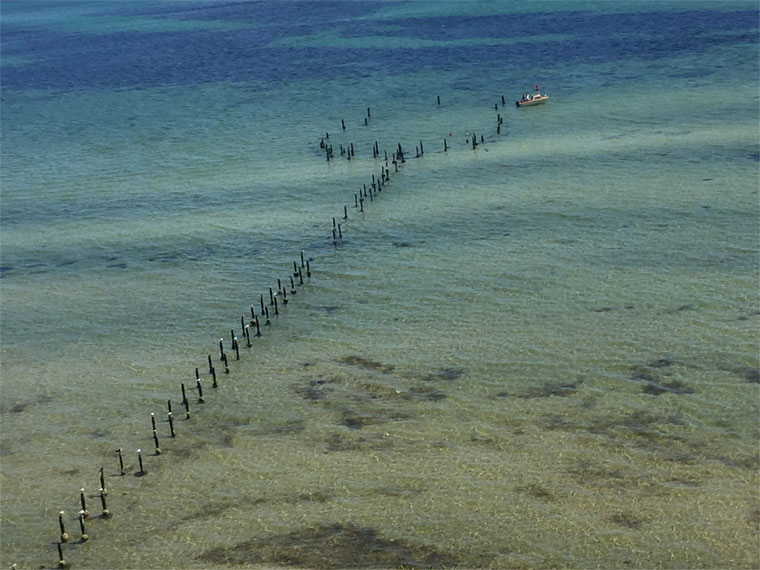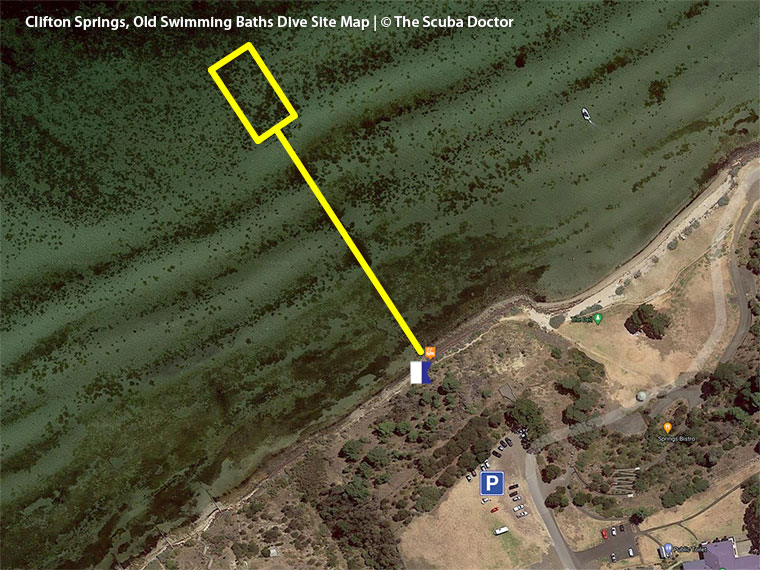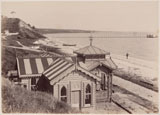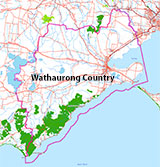Clifton Springs Piers
![]() Shore Dive |
Shore Dive | ![]() Shore access
Shore access
![]()
![]()
![]()
![]()
![]()
Level: Open Water and beyond.
Depth: 1 m (3.28 ft) to 4 m (13 ft)
Clifton Springs, Old Swimming Baths is a delightful shore dive, also suitable for snorkellers. A nice night dive site. It's a shallow dive, best done at high tide. Best to use a dive float with a dive flag.
There are three pier ruins in this area near Clifton Springs on the Bellarine Peninsula in Port Phillip. To the west are the ruins of the old Short Pier near the boat harbour. In the middle are the ruins of the old Salt Water Bath Pier which had swimming baths at the end. To the east are the ruins of the old (Long) Steamship Pier.
Bottle hunting here is popular but requires skill not to stir up the sand and sediment. Seahorses, nudibranchs, stingrays and pipefish can be found at these piers.
Clifton Springs Night Dive
from Allie Beckhurst
on Vimeo.
Location: Clifton Springs
MELWAY Ref: Page 456 G5
Ideal Conditions: Best at high tide. Protected from southerly winds. See WillyWeather (Clifton Springs) as a guide for the tide times and the height of the tide.
The Sunken Gallery
There are plans to create The Sunken Gallery, an underwater sculpture experience, near this dive site.
The local community and visitors will be able to put on a mask and snorkel in a safe and family-friendly environment and explore the unique colour and diversity of the southern Port Phillip.
It will feature a collection of underwater sculptures, which will become a living and evolving underwater canvas that attracts marine life and changes with the seasons.
Clifton Springs, Old Swimming Baths History
The Salt Water Bath Pier featured a saltwater bath house located at the end of the pier, adjacent to the former manager's house at the western end of the Dell. The date of construction is unknown, however, it does not appear in the illustration from 1879 and is present in a photograph of the Spa House dated c.1891. It is therefore assumed to have been constructed during the 1880s. This pier is included in the Victorian Heritage Register (H2088).
See also, Heritage Council Victoria: Former Mineral Springs, Clifton Springs, and
Heritage Council Victoria: Short Pier, Clifton Springs.
Spearfishing is illegal within 30 metres of any pier or jetty and in Marine National Parks. See Spearfishing Laws.
Traditional Owners — This dive site is in the traditional Country of the Wathaurong (Wadda-Warrung) people of the Kulin Nation. This truly ancient Country includes the coastline of Port Phillip, from the Werribee River in the north-east, the Bellarine Peninsula, and down to Cape Otway in the south-west. We wish to acknowledge the Wathaurong as Traditional Owners. We pay respect to their Ancestors and their Elders, past, present and emerging. We acknowledge Bunjil the Creator Spirit of this beautiful land, who travels as an eagle, and Waarn, who protects the waterways and travels as a crow, and thank them for continuing to watch over this Country today and beyond.
Clifton Springs Piers Location Map
Latitude: 38° 9.177′ S (38.15295° S / 38° 9′ 10.62″ S)
Longitude: 144° 33.726′ E (144.5621° E / 144° 33′ 43.56″ E)
Datum: WGS84 |
Google Map
| Get directions
Added: 2012-07-22 09:00:00 GMT, Last updated: 2022-03-22 14:13:16 GMT
Source: Google Earth
Nearest Neighbour: Clifton Springs, Steamship Pier, 599 m, bearing 48°, NE
Bellarine Peninsula.
Depth: 1 to 4 m.
[ Top ]
DISCLAIMER: No claim is made by The Scuba Doctor as to the accuracy of the dive site coordinates listed here. Should anyone decide to use these GPS marks to locate and dive on a site, they do so entirely at their own risk. Always verify against other sources.
The marks come from numerous sources including commercial operators, independent dive clubs, reference works, and active divers. Some are known to be accurate, while others may not be. Some GPS marks may even have come from maps using the AGD66 datum, and thus may need be converted to the WGS84 datum. To distinguish between the possible accuracy of the dive site marks, we've tried to give each mark a source of GPS, Google Earth, or unknown.

